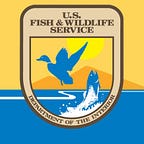Ideas for How You Can Enjoy Wetlands
When you hear the word wetland, perhaps you think of marshes, bogs, swamps, and other places where getting around as a human being could be challenging. Wetlands are incredibly important ecologically and economically to communities, but did you also know that wetlands are actually diverse, beautiful, and fascinating places that can be explored and enjoyed in a variety of ways?
Here are some activities that you can take part in while visiting wetlands:
Camping
Many wetlands offer opportunities for camping. From established campgrounds to backcountry experiences, wetlands can provide a special opportunity for relaxation and recreation. In the image shown above, you can see a unique backcountry camping platform in the midst of the Okefenokee National Wildlife Refuge.
Boating, Canoeing, and Kayaking
Getting out on the water by boat is a fun way to explore wetlands and see terrific scenery and wildlife. Shown above, at Great White Heron National Wildlife Refuge, one program allows boaters to enjoy a “Full Moon Kayak adventure,” on a trip that goes north into the refuge where they can watch the moon come up in the east, and the sun go down in the west.
Bird and Wildlife Watching
Did you know that the Theodore Roosevelt designated the first wildlife refuge, Pelican Island, for bird conservation? Today wetlands continue to be an excellent and reliable location to find wildlife in easier view. Birds, turtles, frogs, insects, and fish are just some of the fascinating and fun wildlife you can observe in these wet places.
Photography
Wetlands, with their varied elements can make more a great place for both casual and professional photographers to have fun and practice their craft. Shown above, a combination, of trees, lily pads, and moss display the intricate beauty of Caddo Lake State Park.
Hunting and Fishing
Many wetlands provide opportunities for hunting and fishing. Shown here, an angler enjoys getting in the water at Seedskadee National Wildlife Refuge.
Learning about Nature
School groups, families, and people who want to learn about nature will find that wetlands are a great place to do it! Throughout the seasons, water provides one of the most critical elements needed for life, and for that reason make wetlands a dynamic place to visit at any time of year for better understanding nature, conducting citizen science products, or just relaxing and rejuvenating one’s spirit. Shown above, several girls enjoy birding in the Cache River watershed.
Snorkeling and Scuba Diving? Yes, you Read that Right!
Did you know that the Convention on Wetlands of International Importance, also known as the Ramsar Convention or the Convention on Wetlands, uses a broad definition of the types of wetlands covered in its mission, including lakes and rivers, swamps and marshes, wet grasslands and peatlands, oases, estuaries, deltas and tidal flats, near-shore marine areas, mangroves and coral reefs, and human-made sites such as fish ponds, rice paddies, reservoirs, and salt pans? There are currently 2,293 Ramsar sites internationally and 38 are within the United States. An example of one of those is Palmyra Atoll National Wildlife Refuge, just one of the places where you can snorkel or swim!
Along with being important transitional ecosystems, wetlands offer a variety of ways to enjoy your time outdoors. Check out the National Wetlands Inventory (NWI) that we manage, and discover local wetlands and more information on their vital importance.
